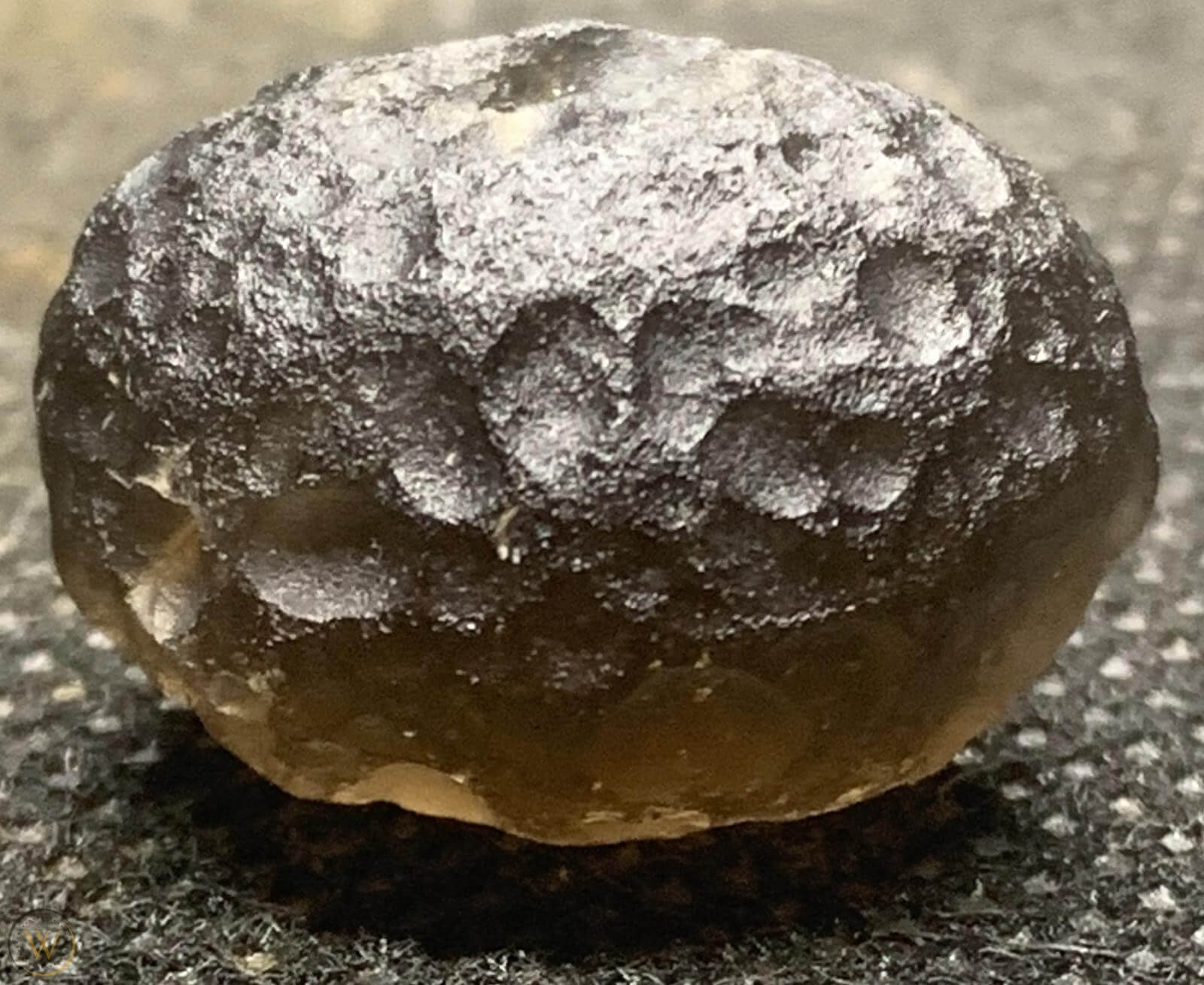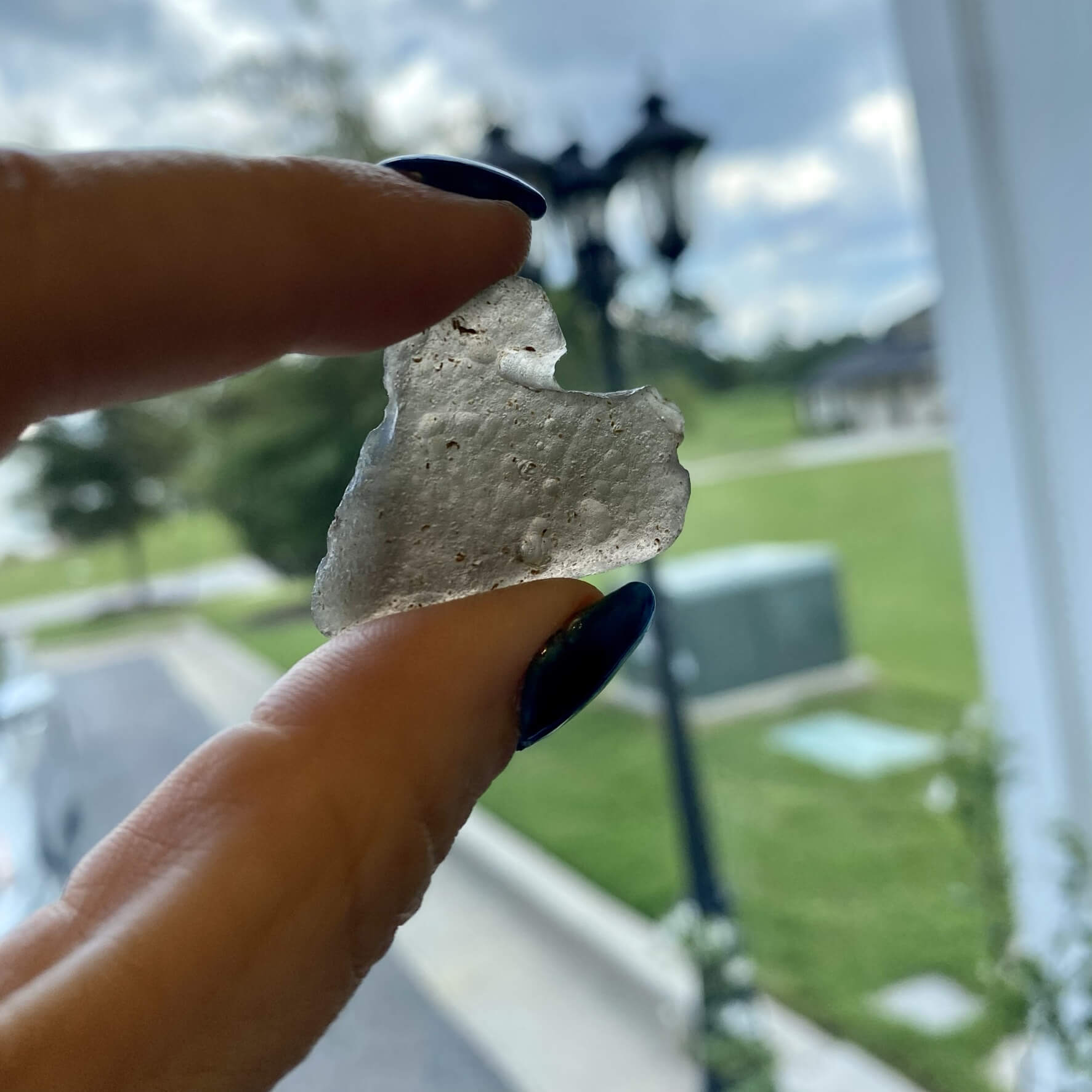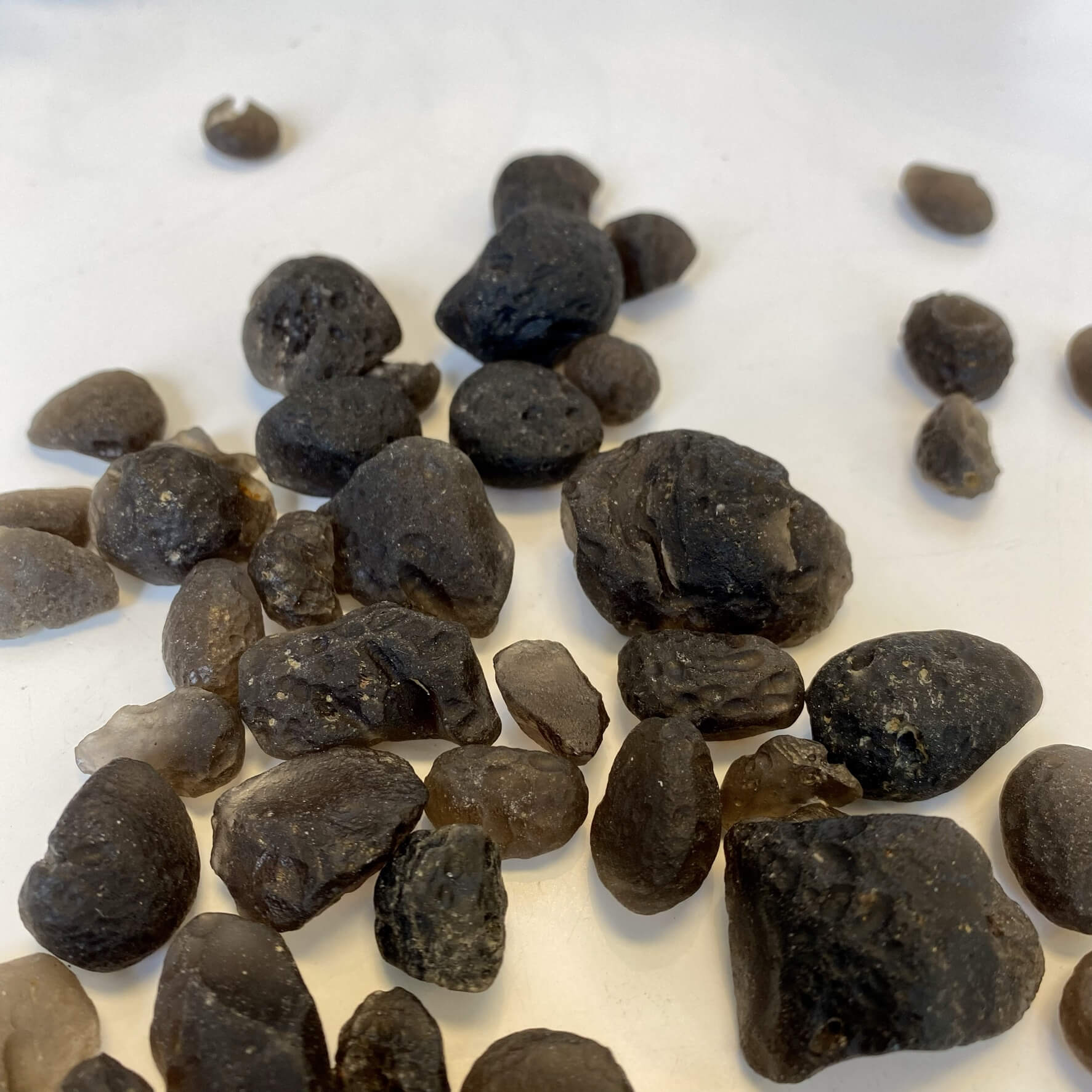
Columbianites
Pseudotektites
Key Words:
Transformation · Grounding · Wisdom · Intuition · Bring About Change
Transformation · Grounding · Wisdom · Intuition · Bring About Change
Colombianite is a naturally occurring silicate glass classified as a pseudotektite—a term used for natural glasses that resemble true tektites in appearance and structure but differ in origin. Unlike tektites, which are formed from meteorite impacts, pseudotektites like Colombianite are believed to have volcanic origins.
This unique natural glass is found primarily in Colombia and Peru and is estimated to be around 30 million years old. Its muted lavender-gray color and smooth, weathered surface are the result of prolonged exposure to geological processes, which give it both aesthetic appeal and scientific interest. Colombianite has been compared visually to Saffordites, Healdsburgites, and other pseudotektites, which are found in different regions but share similar physical characteristics.

Geologically, pseudotektites like Colombianite may have formed from ancient volcanic activity, where molten material was rapidly cooled and then subjected to millions of years of weathering and pressure. Their chemical composition is typically high in silica and similar to natural obsidian, although their age and weathered surfaces set them apart.

Colombianite is often used as a tool for focus, grounding, and intentional transformation. It can support practices such as journaling, meditation, or focused breathing by helping the user stay connected to the present while gently encouraging deeper thought and reflection.

While Colombianite is sometimes mistaken for tektite, it stands on its own as a fascinating example of how geology, time, and environment create stones with both beauty and complexity. Whether you're drawn to its history or its appearance, Colombianite offers a tangible connection to Earth's ancient past and a solid foundation for mindful, grounded intention.



